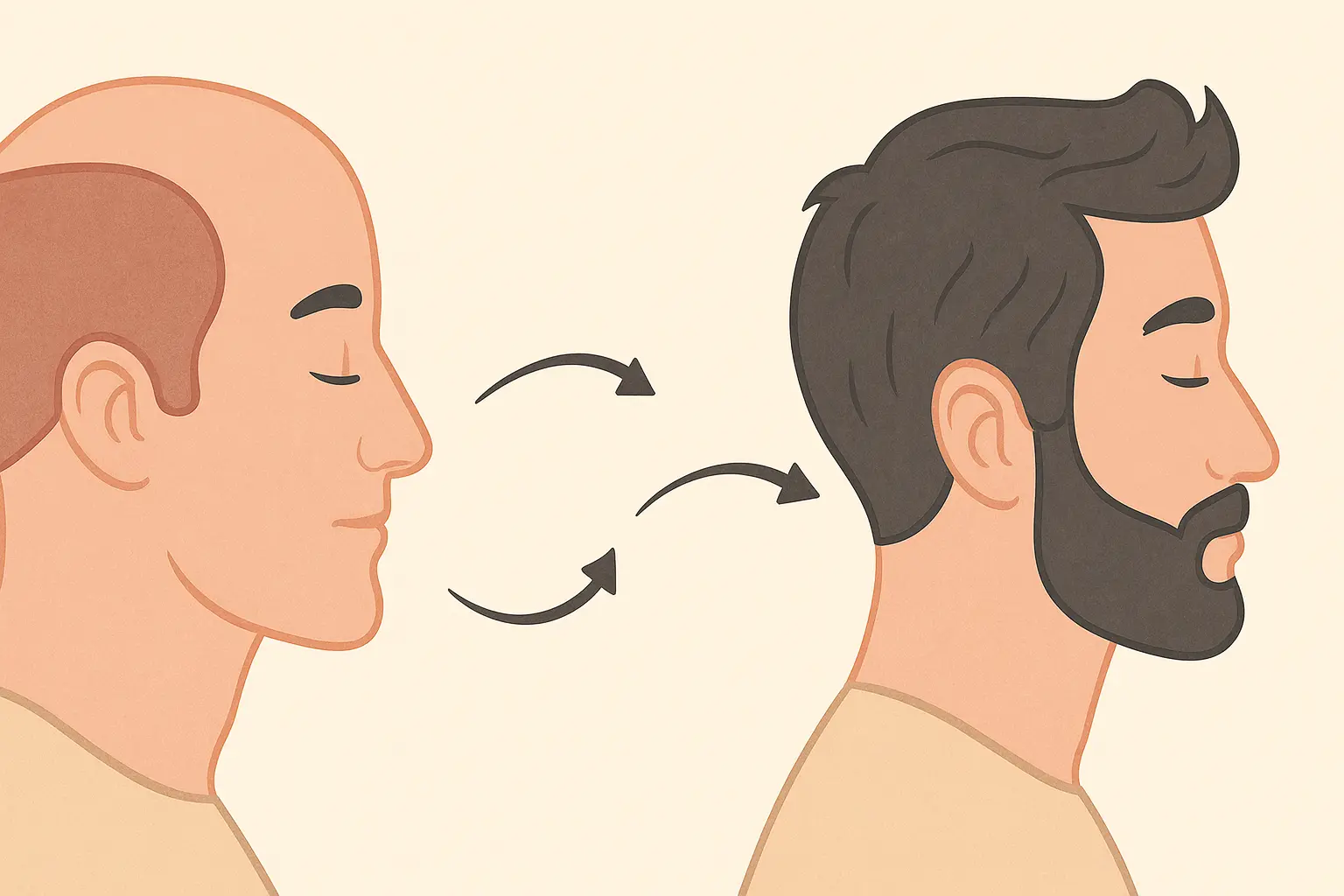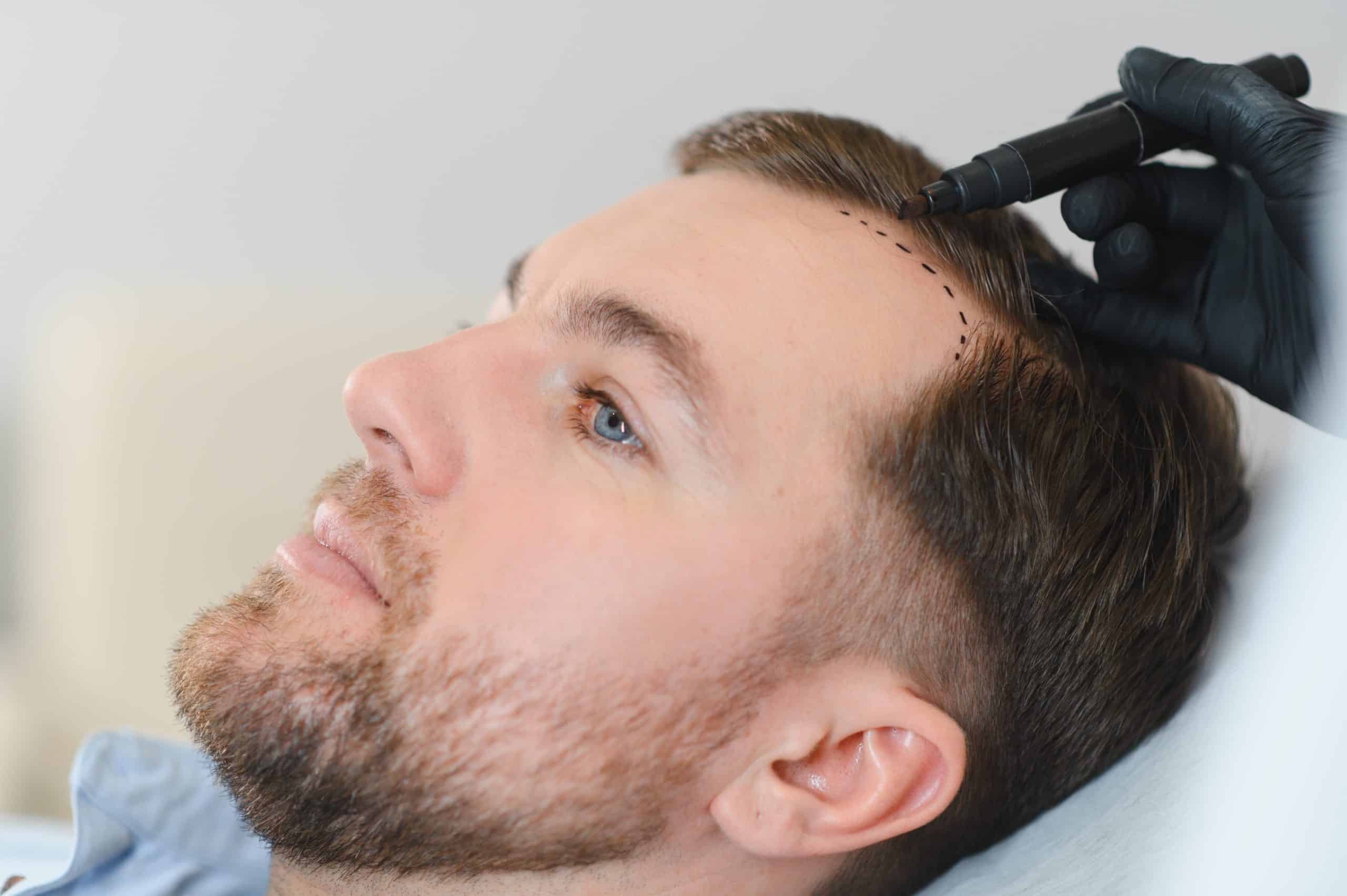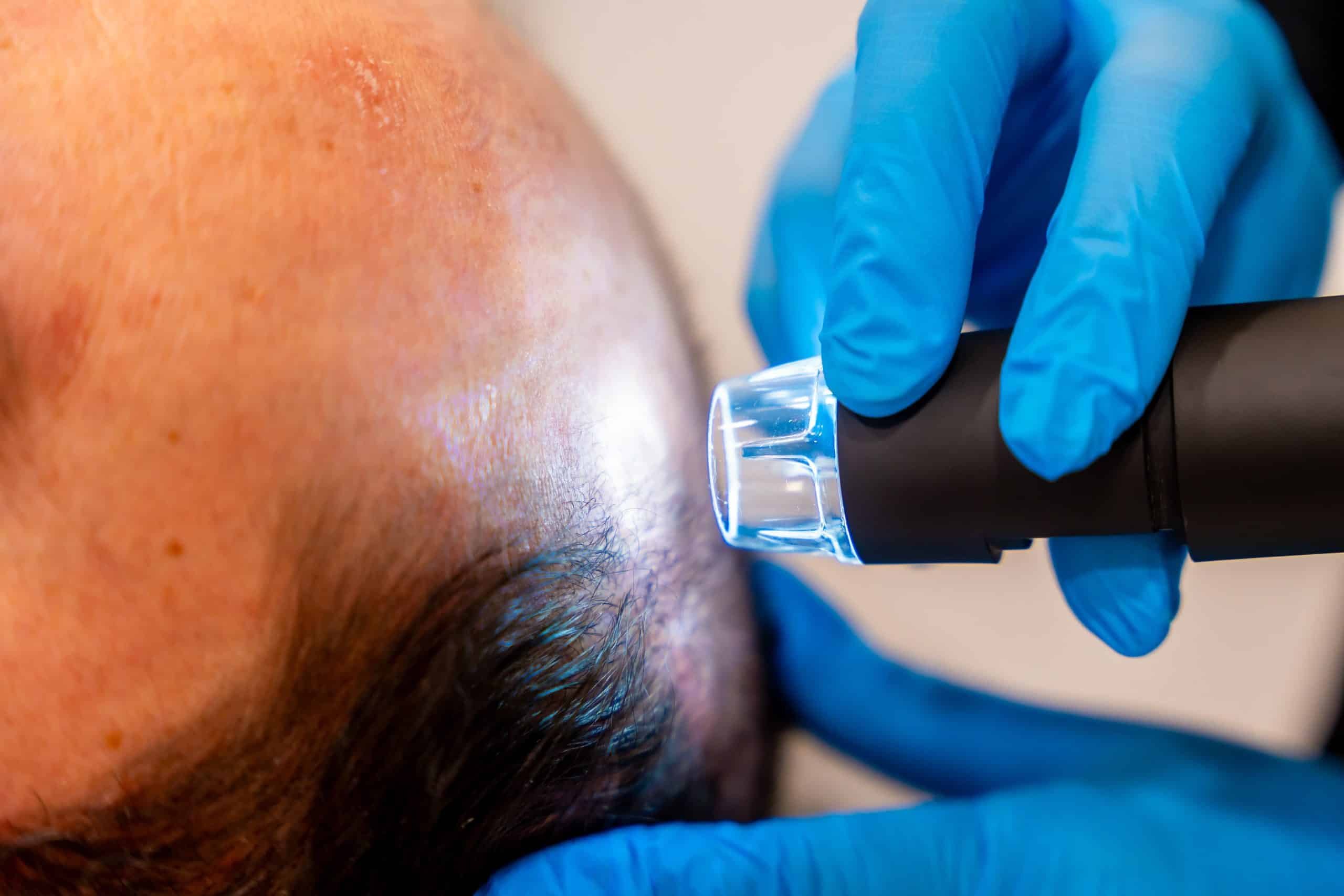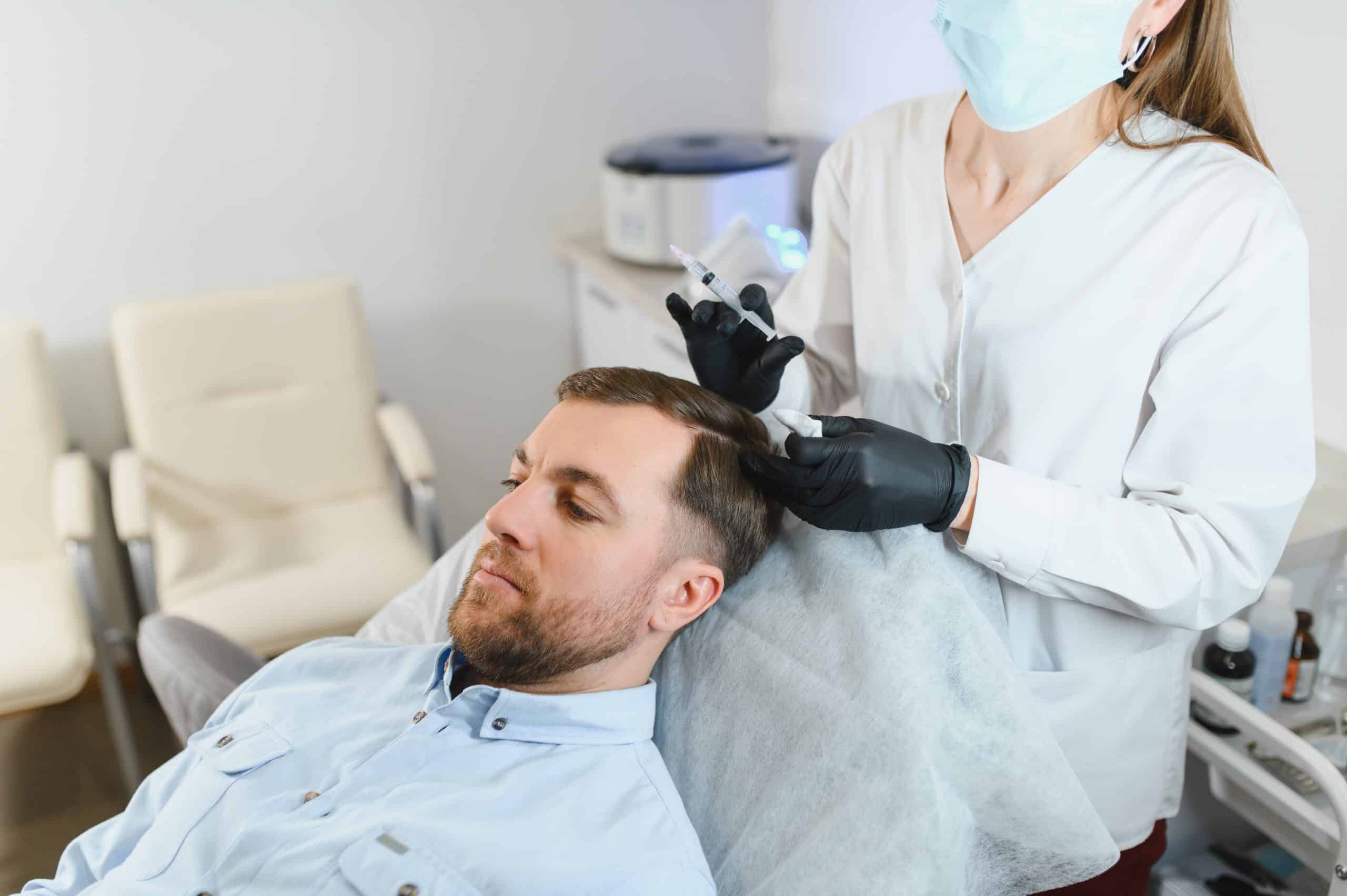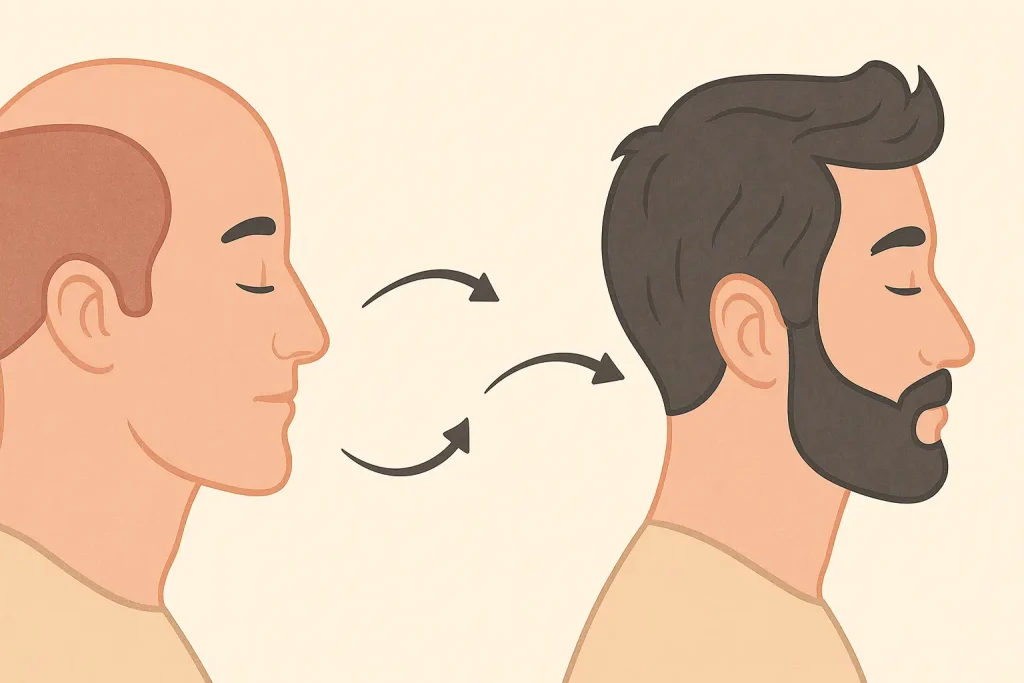
Healing and Crusting Phase
In the first weeks after the transplant, the hair follicles (grafts) begin to adapt to their new location.
- Mild redness, crusting, and itching are normal.
- The crust-shedding process begins after a few days.
- Hair does not grow during this period; the main goal is to ensure that the transplanted follicles settle in healthily.
Things to be careful about:
- Avoid touching or rubbing the area for the first 10 days
- Follow the washing routine recommended by your doctor
- Avoid sun exposure, the sea, and excessive sweating
Shock Loss Phase (Shedding)
Between the 2nd and 6th weeks, the process known as shock loss begins.
During this time, the transplanted hair strands fall out, but the follicles remain in place.
This can be discouraging, but don’t worry — this shedding is part of the natural renewal process.
Real hair growth begins once the follicles complete their resting phase.
The Awakening Begins
Starting from the third month, the hair follicles gradually become active again.
- Thin, fuzzy hairs begin to appear.
- These early hairs may be weak and lacking color.
During this period, supportive treatments such as PRP or mesotherapy can increase blood circulation and speed up hair growth.
Noticeable Growth Phase
At this stage, you’ll begin to see visible changes in the mirror.
- Around 30–40% of the hair has grown out.
- Thickness and fullness gradually increase.
- The hairline starts becoming more defined.
- Shedding decreases, and the hair strands look stronger.
This is one of the most motivating stages of the journey.
Natural Appearance Phase
By this time, most of the hair (about 70–80%) has grown out.
- The hair becomes fuller, thicker, and more natural.
- Styling and getting a haircut become possible from this period onward.
- The results of the transplant start to become noticeably apparent in daily life.
Final Result
The full result of the hair transplant becomes visible at the end of one year.
- Almost all transplanted follicles have grown.
- Hair density, quality, and naturalness are fully established.
- In some individuals, the final result may extend up to 18 months.
Tips to Speed Up Hair Growth
- Follow all post-care instructions given by your doctor.
- Consider supportive treatments like PRP or mesotherapy.
- Maintain a healthy diet, with attention to protein and biotin intake.
- Treat your scalp gently and avoid harsh chemical products.
Patience, Consistent Care, and a Trustworthy Team
A hair transplant is not a one-day process; it’s a 12-month transformation.
With patience and consistent care each month, you can achieve natural, strong, and lasting hair.
Remember, aftercare is just as important as choosing the right clinic and experienced specialists.


